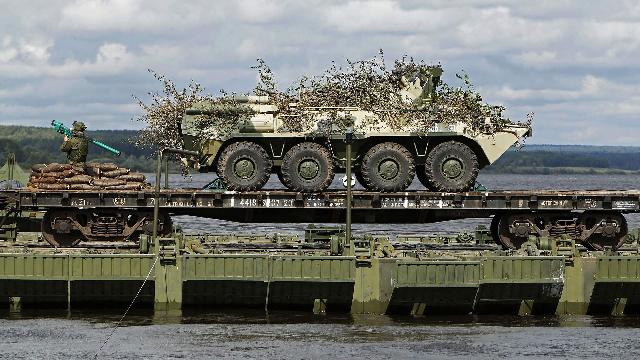The construction time of the pontoon crossing will be reduced by a third
Tests of the floating railway bridge NZHM-2020 are being completed. Its predecessor was developed in the middle of the last century. The new bridge is built 30% faster and can withstand a heavy load. It is designed for the passage of railway trains, as well as for the crossing of heavy wheeled and tracked vehicles. Experts note that in the current military-political situation, floating bridges play an important strategic role, as they will help ensure stable transport links for troops.
Characteristics of the new bridge
In the event that the floating railway bridge NZHM-2020 successfully passes state tests, it is recommended for release in the interests of the Armed Forces of the Russian Federation. Its length can reach 285 m, and only one pontoon-bridge company will be required for assembly. It is planned to include two sets of NWM-2020 in separate pontoon-bridge battalions of the Russian Armed Forces, sources in the Russian Defense Ministry told Izvestia.
The interlocutors of the publication added that the novelty should replace similar bridges NZHM-56 and NZHM-56U developed in the middle of the last century. The new product will increase the rate of construction of the pontoon crossing by a third.
In addition, the speed of trains on the NWM 2020 will increase by 5 km/h to 15 km/h. The bridge will allow transporting wheeled vehicles weighing up to 104 tons and tracked vehicles up to 60 tons at speeds up to 30 km/h, the sources noted.
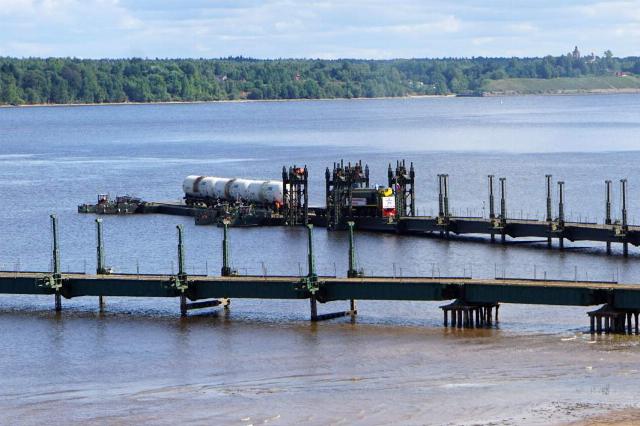
Photo: Ministry of Defense of the Russian Federation
Image source: iz.ru
The NZHM-2020 prototype began to be developed in 2019 and was first tested in 2022 at the testing ground of special equipment of the railway troops near Yaroslavl.
The new bridge will be unified with the NZHM-56 and NZHM-56U. The Ministry of Defense has already reported that a 784 m long pontoon ferry was being built across the Volga from the sets of NZHM-56 and NZHM-2020. Troops and military supplies were transported along it.
In particular, a special Baikal train passed over the floating railway bridge, which is designed to perform technical reconnaissance, mine clearance, restoration of destroyed railway sections and combat escort of military echelons.
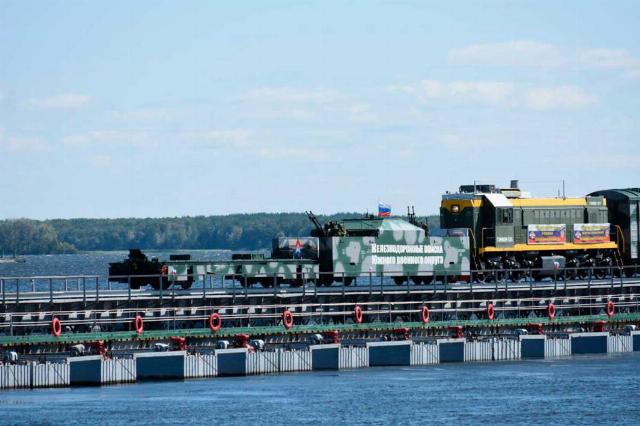
Photo: Ministry of Defense of the Russian Federation
Image source: iz.ru
Also, a military echelon with military equipment 500 m long and weighing 1300 tons was transported over the bridge over the Volga. The area was covered by aerosol clouds, electronic warfare and air defense systems.
Given the size of our country and the military-political situation in the world, the opportunity to build new bridges across rivers, if necessary, now plays a particularly important strategic role, said military expert Viktor Litovkin.
— We need to know that we can throw military equipment over any major river at any time, — the expert explained. — Bridges provide normal transport links. Ferry crossings are a long time, everything is transported there one at a time, at best, several units at a time. The ability to immediately transport a military echelon will significantly increase the speed and volume of equipment being transferred. In addition, the load capacity of the new bridge allows all types of our tanks to pass through it. The rest of the equipment is usually lighter.
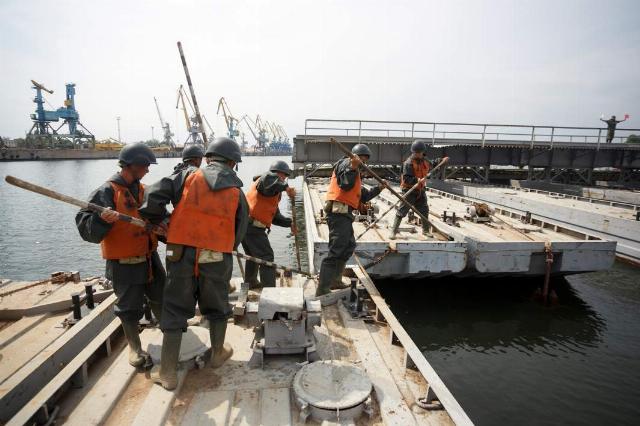
Photo: RIA Novosti/Kirill Braga
Image source: iz.ru
The expert believes that it is necessary to update the military bridge facilities.
— In the early years of the Russian government, military bridge equipment and all the processes that were associated with it were left to chance. She wasn't getting the attention she needed," he reminded her.
Now Ukrainian militants are massively destroying bridges in the area of their own defense, the expert noted.
— There are large capital railway and automobile bridges among the destroyed ones, — Viktor Litovkin noted. — We also have to throw military equipment over water barriers. They will be useful after that: we still have to rebuild Ukraine.
Quickness and durability are the main characteristics
Such characteristics as quickness and strength are of particular importance for bridge crossings, Colonel Alexander Perendzhiev, Associate professor at Plekhanov Russian University of Economics, told Izvestia.
— Therefore, the renewal of the bridge fleet is expected, — the expert added. — Since the middle of the last century, many new materials have appeared that allow us to improve the basic design indicators.
The expert said that when developing such bridges, the mass of railway and military equipment is taken into account so that all combat vehicles available in the army, as well as supply and support vehicles, both under their own power and by rail, can be thrown over water barriers.
— Train compilers should not think whether the bridge will withstand this or that technique. This facilitates the logistics of transportation," he said.
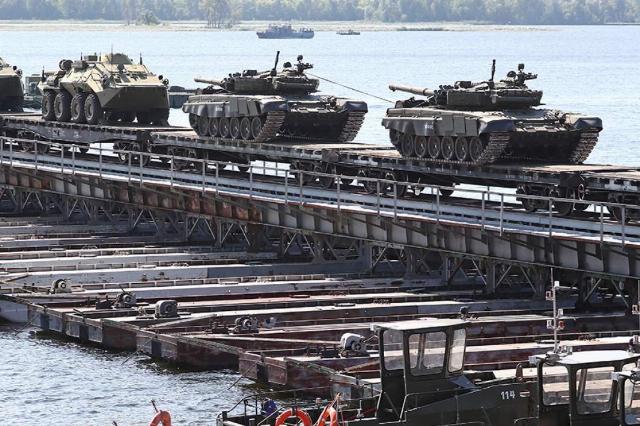
Photo: TASS/Anton Novoderezhkin
Image source: iz.ru
The expert also noted that the length of floating bridges will allow crossing the largest and widest rivers.
"Moreover, they may be needed not only in wartime, but also in peacetime, since capital bridges can be damaged during emergencies,— Perendzhiev noted.
Earlier, Izvestia wrote that heavy ferries are being developed for the Russian army. The novelty, which will be delivered to engineering and railway troops, will be able to transport combat vehicles weighing tens of tons, including tanks. At the same time, such watercraft are not afraid of strong winds, currents, or waves.
With its own weight of 720 tons, the ferry carries up to 120 tons at a time, that is, a tank and several armored personnel carriers, IFVs and cars.
The new watercraft is a kind of constructor. In the marching condition, its deck is disassembled into several links. Also in the package there are tow-motor components and several more sections from which the sides are assembled, as well as the bow and stern parts equipped with special ramps for the arrival and exit of equipment. All parts of the new pontoon are based on highly passable trucks of domestic production — this will allow the sections to be transported even in off-road conditions.
Bogdan Stepovoy
Roman Kretsul
